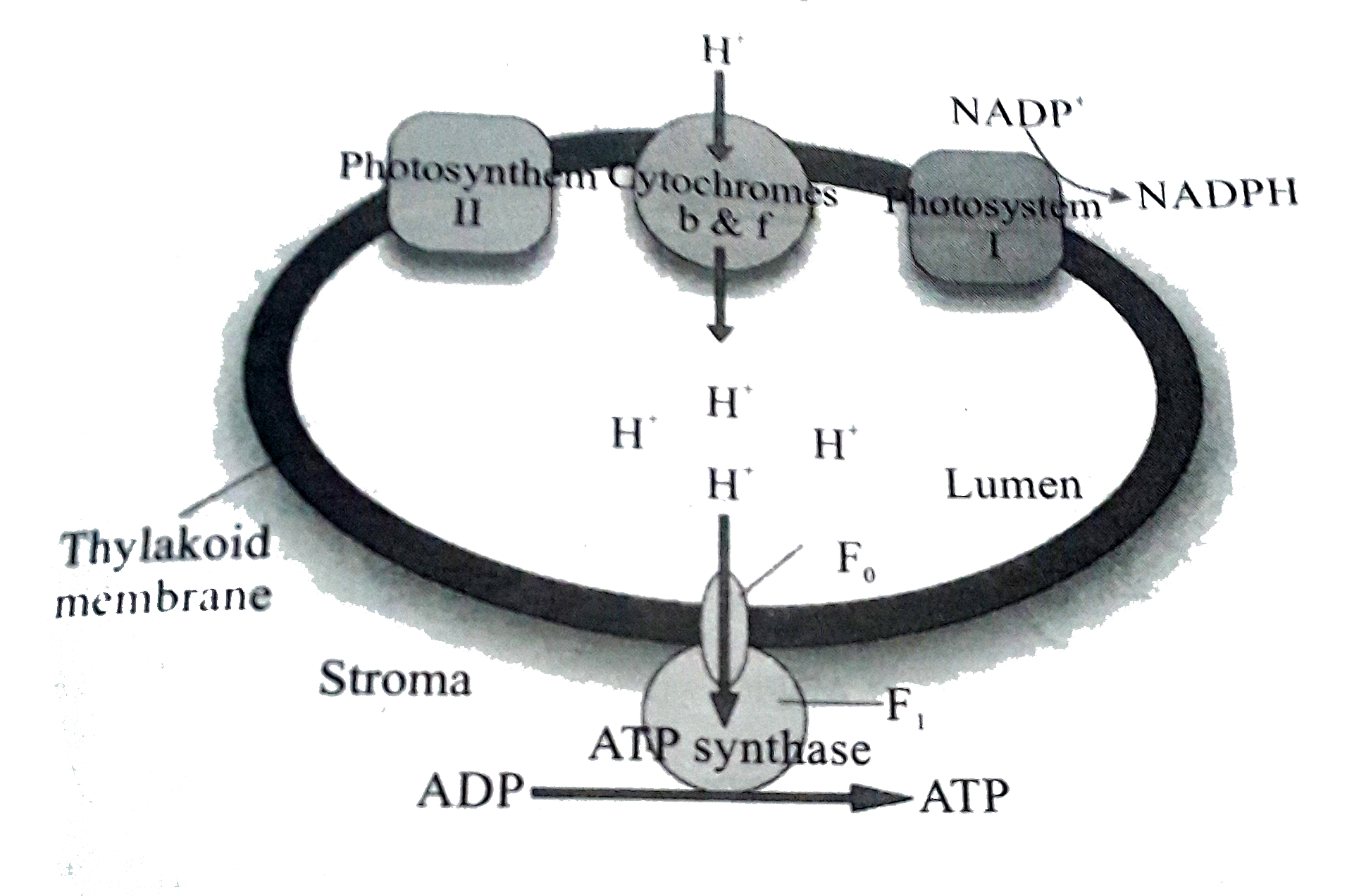Chemiosmosis requires
I) A membrane II) A proton pump
III) Proton gradient IV) ATPase
I and IV only
I, II, and III only
I, III and IV only
I, II, III and IV .
The correct Answer is:D
To solve the question regarding what chemiosmosis requires, we will analyze each of the given options step by step.
1. Understanding Chemiosmosis:
- Chemiosmosis is a process that involves the movement of protons (H⁺ ions) across a membrane, which is crucial for ATP production in cellular respiration and photosynthesis.
2. Identifying the Requirements:
- We need to evaluate each of the four options provided:
- I) A membrane: A membrane is essential for creating a proton gradient. It separates the compartments where protons are pumped and where they accumulate.
- II) A proton pump: A proton pump is necessary to actively transport protons across the membrane, establishing the proton gradient.
- III) Proton gradient: The proton gradient is the driving force for ATP synthesis. It is created by the action of the proton pump.
- IV) ATPase: ATPase (specifically ATP synthase) is the enzyme that utilizes the energy from the proton gradient to synthesize ATP from ADP and inorganic phosphate.
3. Conclusion:
- All four components are essential for chemiosmosis:
- A membrane is needed to separate the compartments.
- A proton pump is required to create the proton gradient.
- The proton gradient itself is crucial for ATP production.
- ATPase is necessary for the actual synthesis of ATP.
- Therefore, the correct answer is that chemiosmosis requires all of the above options.
Final Answer:
Chemiosmosis requires:
- I) A membrane
- II) A proton pump
- III) Proton gradient
- IV) ATPase
Thus, the answer is all of the above.
---
- Chemiosmosis is a process that involves the movement of protons (H⁺ ions) across a membrane, which is crucial for ATP production in cellular respiration and photosynthesis.
- We need to evaluate each of the four options provided:
- I) A membrane: A membrane is essential for creating a proton gradient. It separates the compartments where protons are pumped and where they accumulate.
- II) A proton pump: A proton pump is necessary to actively transport protons across the membrane, establishing the proton gradient.
- III) Proton gradient: The proton gradient is the driving force for ATP synthesis. It is created by the action of the proton pump.
- IV) ATPase: ATPase (specifically ATP synthase) is the enzyme that utilizes the energy from the proton gradient to synthesize ATP from ADP and inorganic phosphate.
- All four components are essential for chemiosmosis:
- A membrane is needed to separate the compartments.
- A proton pump is required to create the proton gradient.
- The proton gradient itself is crucial for ATP production.
- ATPase is necessary for the actual synthesis of ATP.
- Therefore, the correct answer is that chemiosmosis requires all of the above options.
Chemiosmosis requires:
- I) A membrane
- II) A proton pump
- III) Proton gradient
- IV) ATPase
Topper's Solved these Questions
- PHOTOSYNTHESIS IN HIGHER PLANTS BOOK - AAKASH SERIESCHAPTER - PHOTOSYNTHESIS IN HIGHER PLANTS EXERCISE - Exercise - II
33 Videos
- PHOTOSYNTHESIS IN HIGHER PLANTS BOOK - AAKASH SERIESCHAPTER - PHOTOSYNTHESIS IN HIGHER PLANTS EXERCISE - Exercise - III
27 Videos
- ORGANISMS AND POPULATIONSBOOK - AAKASH SERIESCHAPTER - ORGANISMS AND POPULATIONSEXERCISE - EXERCISE-III (PREVIOUS AIPMT/NEET QUESTIONS)
35 Videos
- PLANT GROWTH AND DEVELOPMENT BOOK - AAKASH SERIESCHAPTER - PLANT GROWTH AND DEVELOPMENT EXERCISE - EXERCISE -III (PREVIOUS AIPMT/NEET QUESTIONS)
27 Videos
Similar Questions
Basal medium does not esentially require
(I) Vitamins (II) NAA
(III) Cytokinins (IV) Carbohydrates
View Solutionchoose correct option for chemiosmotic hypothesis of ATP formation in chloroplast (A).NADP reductase is located on lumen side of the thylakoid membrane (B).proton gradient across the membrane is generated due to pumping of protons as well as phytolysis of water (C). proton gradient breaks when proton move passively through F_0 particle (D). energy is not used to pump protons from stroma side to lumen side
View Solution
Knowledge Check
Energy released during movement of electrons through the photosystems in photosynthesis is used to drive protons across the membrane against concentration gradient. As a result the protons accumulate in
Athylakoid lumenBstoma of chloroplastCmatrix of mitochondrionDnone of these
Observe the given figure of ATP sysnthesis through chemiosmosis and arrange the followign events in correct sequence

(a) Movement of e− through H-carrier
(b) Shifting of protons from stroma to Lumen
(c) Facilitated diffusion of protons across the membrane
(d) Conformation change in the F1 particle of the ATPase
(e) Formation of ATP molecule
View SolutionChemiosmotic theory of ATP synthesis in the chloroplasts and mitochondria is based on
(a) Proton gradient
(b) Accumulation of K+ ions
(c) Accumulation of Na+ ions
(d) Membrane potential
View Solution[A] : The mechanism of ATP formation in mito- chondria is almost similar to that of chloro plast.
[R]: In mitochondria there is proton gradient formation inside intermembrane space whereas in chloroplast proton gradient is formed in thylakoid lumen.
View SolutionChemiosmotic theory of ATP synthesis in the chloroplasts and mitochondria is based on
(a) Proton gradient
(b) Accumulation of K+ ions
(c) Accumulation of Na2+ ions
(d) Membrane potential
View SolutionProton pump is a movement of protons from
View SolutionWhich of the following assertions are correct?
(i) A neutron can decay to a proton only inside a nucleus
(ii) A proton can change to a neutron only inside a nucleus
(iii) An isolated neutron can change into a proton
(iv) An isolated proton can change into a neutron
View SolutionA transport which is carried out by membrane prote ins and uses energy to pump molecules against a concentration gradients is
View Solution
